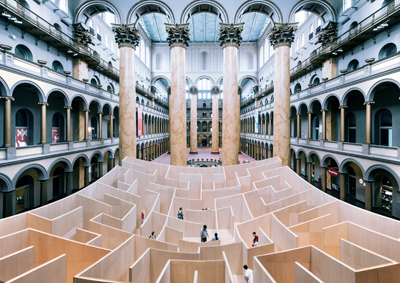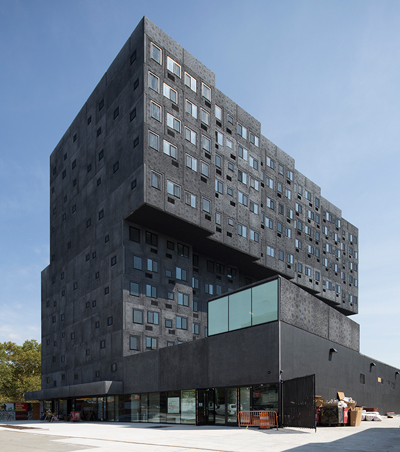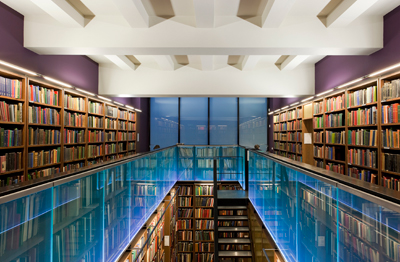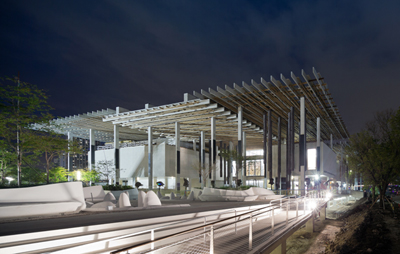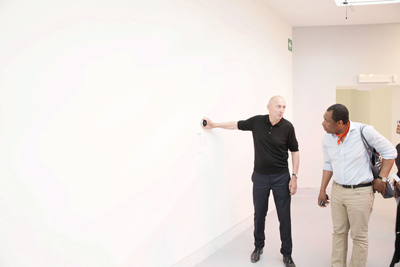|
Robbrecht and Daem scooped last year’s title. Here are the nominees for the year’s best architecture firm. The category is sponsored by Scandinavian Business Seating BJARKE INGELS GROUP (BIG) Architectural provocateur Bjarke Ingels, whose playful manifesto Yes Is More takes the form of a 130m-long cartoon strip, founded his architecture practice in 2005 and now has offices in Copenhagen, New York and Beijing. Ingels can always be relied on to think of the extraordinary: currently on his drawing board are plans for a zoo where animals stare at humans, and a waste incinerator with sides that the public can ski down. BIG is currently working on its first designs in North America: the Kimball Art Center in Park City, Utah, and West 57 in New York. The latter is a pyramid-like apartment building with a steeply sloped facade that is a hybrid of a European perimeter block and a traditional Manhattan high-rise. The practice recently completed the conversion of a dry dock into the Danish Maritime Museum and a wooden maze at the National Building Museum, Washington DC. Read about BIG’s Danish Maritime Museum earlier this year
BIG Maze at Washington’s National Building Museum DAVID ADJAYE ASSOCIATES The Tanzanian-born, London-based architect and OBE David Adjaye has enjoyed great success since founding his practice in 2000. His Idea Store in Whitechapel, east London (shortlisted for the RIBA Stirling Prize in 2006) brought the public library into the digital age, and last year Adjaye completed two further libraries in the suburbs of Washington DC. From furniture, fashion boutiques and one-off homes for artists, to vast education buildings and housing, Adjaye brings his considered design approach to a wide variety of projects. He is dedicated to improving knowledge about African cities, travelling across the continent alone with a camera for the book Adjaye Africa Architecture, published in 2011. This year the architect has completed a sensitive restoration for Marian Goodman Gallery and a boutique for Roksanda Ilincic, both in London, as well as an affordable housing complex in Sugar Hill, New York. Read about David Adjaye’s Washington chair designs
Sugar Hill housing HAWORTH TOMPKINS ARCHITECTS Graham Haworth and Steve Tompkins founded their practice in 1991 with a desire to make “buildings influenced by the chemistry of individual places and cultural situations”. This dedication to context has seen them create a range of schools, galleries, theatres, housing and shops that are unique in design, often setting up a modern counterpoint to existing or historic buildings. The studio won the 2014 Stirling Prize for the Everyman Theatre in Liverpool, a popular choice that was acclaimed for its quality of spaces. Other recent projects include two in London: the Clothworkers’ Centre at the Victoria and Albert Museum’s Blythe House fashion and textile study centre, which includes a custom compressed storage system; and Donmar Dryden Street, a conversion of a warehouse into a rehearsal space with a dramatic polychromatic staircase painted by Antoni Malinowski. Read about Haworth Tompkins’ Everyman Theatre in Liverpool
The London Library HERZOG & DE MEURON In Icon’s Venice Biennale issue (134), Jacques Herzog revealed an interest in curating the major architectural event in four year’s time. It’s an exciting prospect, given the body of world-class architecture, urban design and research that he and partner Pierre de Meuron have built up over 36 years, including the Parrish Art Museum in New York, the Bird’s Nest stadium in Beijing and the iconic 1111 Lincoln Road complex in Miami Beach. The office, led by five senior partners with offices in Basel, Hamburg, New York, London, Madrid and Hong Kong, has recently completed the Swiss pavilion at the 2014 Venice Biennale, a sports-complex in a Brazilian favela and the Pérez Art Museum in Miami. In London, we await the extension to Tate Modern, which will be completed in 2016. Read about OMA’s De Rotterdam and our interview with Jacquez Herzog
Pérez Art Museum Miami OMA OMA has a knack for picking out the salient issues of our time. In 2001, Rem Koolhaas made a splash with his Junkspace essay, a powerful lament for modern architecture. More recently, while the world was talking about cities, he began writing about the countryside (Icon 135). This year, his provocative Elements exhibition at the Venice Biennale, which focused on the fundamental building blocks of construction, provoked as much frustration as it did delight in the architecture profession. The firm’s intellectual activity is backed up by an innovative portfolio of architecture, including its restoration this year of the Kunsthal in its hometown of Rotterdam and last year’s mammoth De Rotterdam building. Read about OMA’s De Rotterdam and Rem Koolhaas’ essay for Icon about the countryside
OMA’s Rem Koolhaas at his Elements exhibition at the Venice Biennale The Icon Awards take place on 4 December. Read the full shortlist here |
Words Icon |
|

